#barbara leigh-hunt
Text

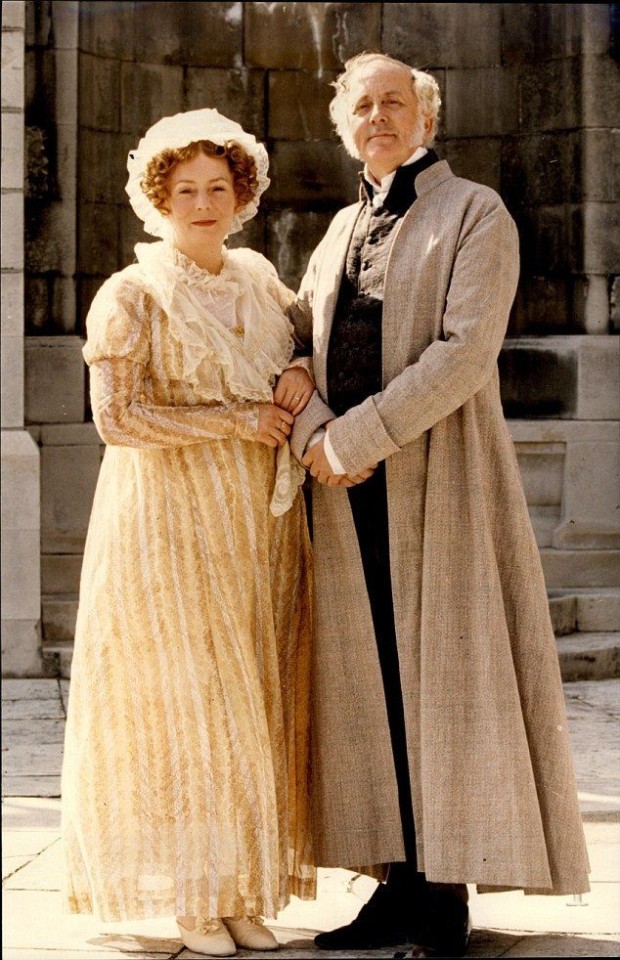

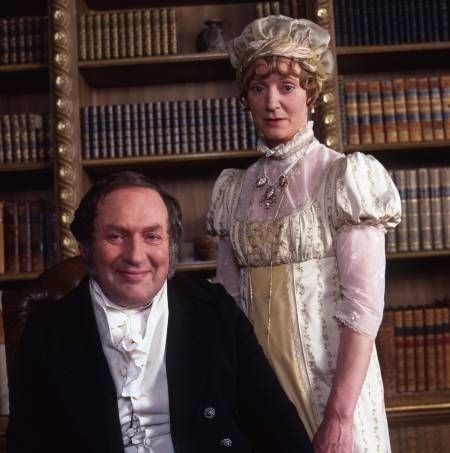
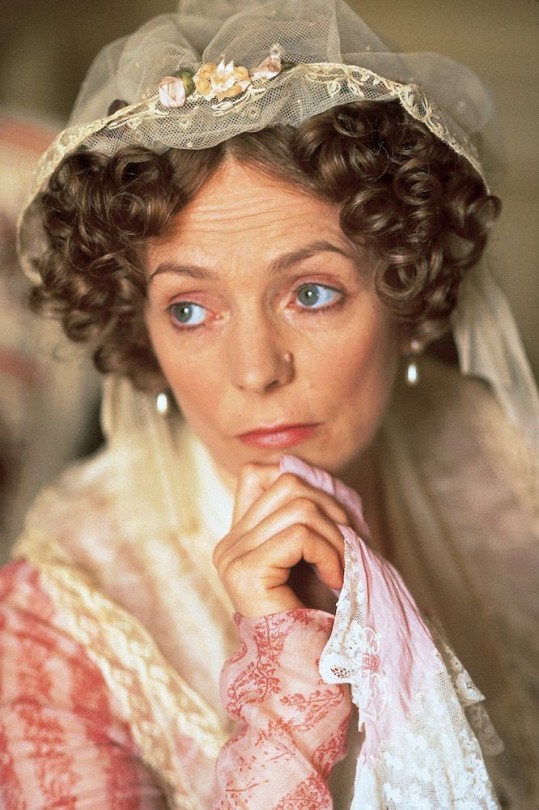





PRIDE AND PREJUDICE (1995)
#pride and prejudice#pride and prejudice 1995#miniseries#period drama#jane austen#colin firth#jennifer ehle#barbara leigh-hunt#alison steadman#crispin bonham-carter#anna chancellor#susannah harker#benjamin whitrow#julia sawalha#david bamber#emilia fox
719 notes
·
View notes
Text
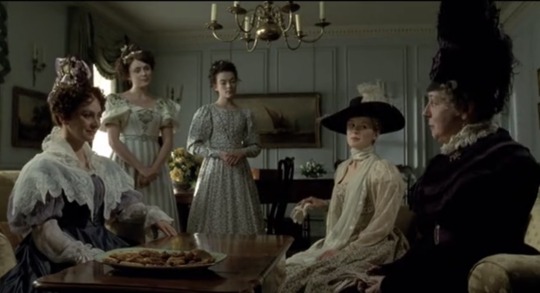

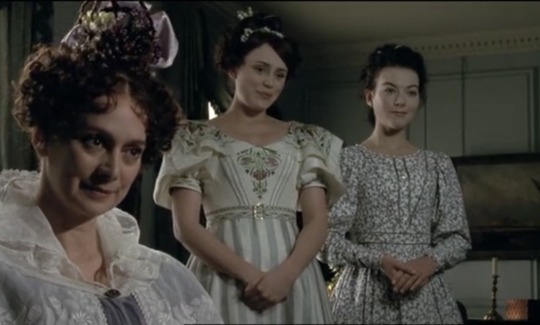
Wives and Daughters (BBC Drama, 1999).
#period drama#wives and daughters#bbc#Rosamund pike#keeley hawes#justine waddell#francesca annis#Barbara Leigh-hunt
13 notes
·
View notes
Photo

Frenzy, Italian lobby card, 1972
#submission#Frenzy#Alfred Hitchcock#Jon Finch#Barry Foster#Barbara Leigh-Hunt#Lobby Card#Lobby Cards#Fotobusta
2 notes
·
View notes
Text
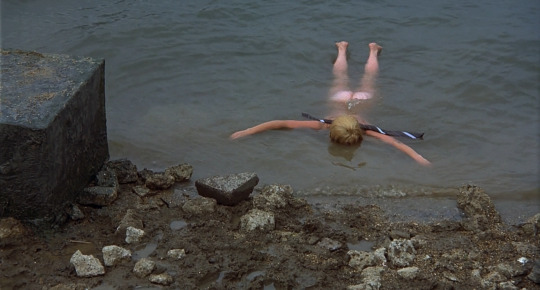
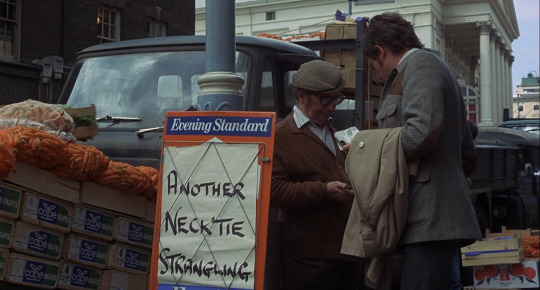
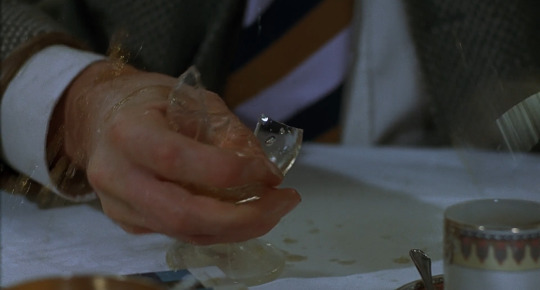
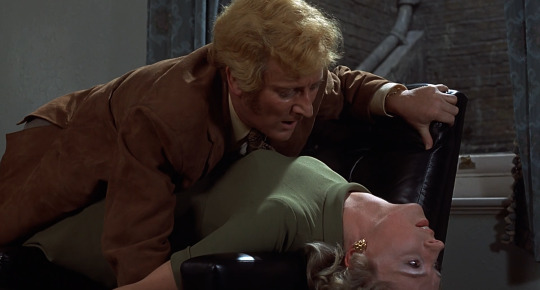
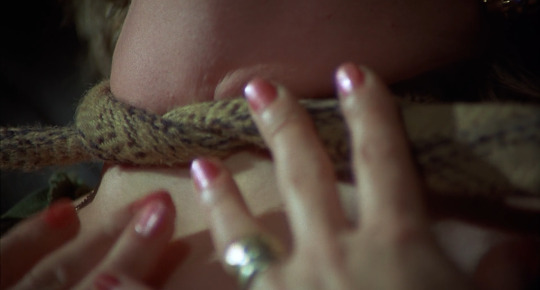
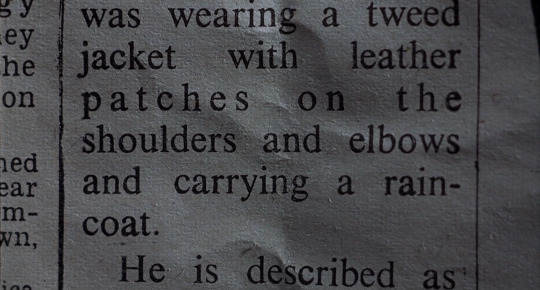

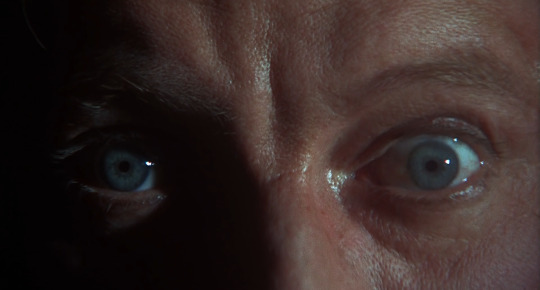

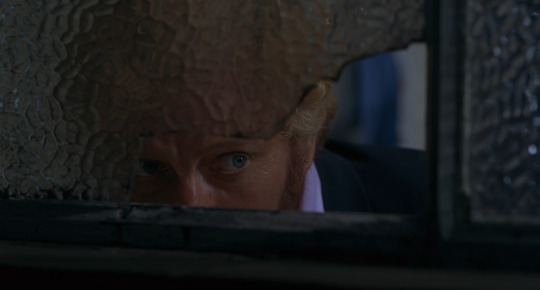
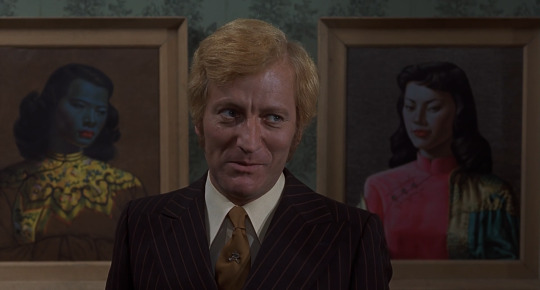


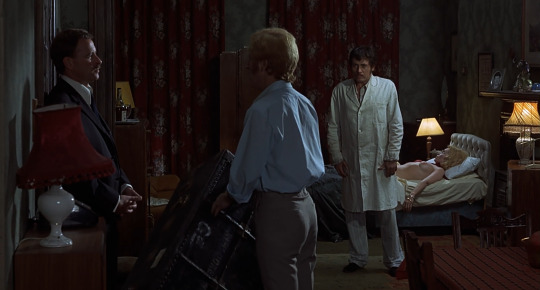
FRENZY (1972)
Dir. Alfred Hitchcock
#frenzy#1972#filme#film#hitchcock#alfred hitchcock#jon finch#barry foster#alec mccowen#anna massey#billie whitelaw#barbara leigh-hunt#thriller
21 notes
·
View notes
Photo

Barbara Leigh-Hunt as Catherine Parr in Henry VIII and his Six Wives (1972)
#henry viii and his six wives#perioddramaedit#barbara leigh hunt#barbara leigh-hunt#Catherine Parr#katherine parr#Kateryn Parr#kathryn parr#katheryn parr#katharine parr#ours#ours: edit#edit#movie: henry viii and his six wives#tudorerasource#dailytudors#historicwomendaily
43 notes
·
View notes
Photo

#pride and prejudice#jennifer ehle#colin firth#alison steadman#benjamin whitrow#susannah harker#julia sawalha#polly maberly#lucy briers#crispin bonham-carter#barbara leigh-hunt#adrian lukis#david bamber#simon langton#1995
2 notes
·
View notes
Text
"WIVES AND DAUGHTERS" (1999) Review
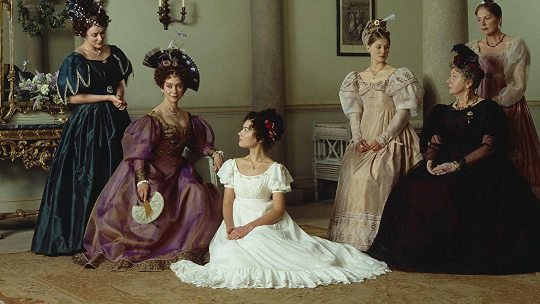
"WIVES AND DAUGHTERS" (1999) Review
Twenty-three years have passed since the BBC first aired "WIVES AND DAUGHTERS", the 1999 adaptation of Elizabeth Gaskell’s 1865 novel. And despite the passage of time, it has a sterling reputation as one of the best adaptations of a literary source in recent years.
Adapted by Andrew Davies and directed by Nicholas Renton, "WIVES AND DAUGHTERS" told the story of Molly Gibson, the young daughter of a local village doctor during the last decade of the Georgian era. The four-part miniseries struck me as Molly’s coming-of-age story. She and her widowed father lived an idyllic life until two things occurred. One, her father married a woman she disliked, a former governess named Hyacinth “Claire” Kirkpatrick. And two, Molly fell in love with one Roger Hamley, the science-minded younger son of a local squire.
If Dr. Gibson had his way, Molly would have never experienced any coming-of-age. But after one of his apprentices became romantically interested in her, he became determined to keep her in a state of perpetual adolescence. But his actions merely ensured that he would fail. First, he arranged for Molly to become the companion to Mrs. Hamley, the sickly wife of the squire. This gave Molly the opportunity to form an emotional attachment to the Hamley, befriend and fall in love with younger son, Roger. Then Dr. Gibson committed another act that defeated his purpose. He married former governess Hyacinth Kirkpatrick in order to provide Molly with a stepmother. This action backfired, since Molly never warmed up to the selfish and socially ambitious older woman. However, she did befriend the new Mrs. Gibson’s rebellious and more worldly and daughter, Cynthia Kirkpatrick. Not only did both Kirkpatrick women managed to disrupt the Gibson household, but Molly’s relationship with Cynthia would open her eyes to a great deal more about relationships and life in general – both the good and bad.
Other subplots abounded in ”WIVES AND DAUGHTERS”. Molly had a first-hand look into the conflict between the loveable, yet impatient and slightly selfish Squire Hamley and his more genteel older son, Osbourne. At first, the Hamleys seemed to regard Osbourne as the key to the family’s return to its former glory. But Osbourne’s scholastic troubles and excessive spending (for a secret French wife for whom he provided a private household) ended up disappointing Squire Hamley. Instead, he transferred his hopes to his younger and more studious son, Roger; who seemed to be on the verge of making a name for himself as a naturalist in Britain’s scientific community.
Another subplot centered on Cynthia Kirkpatrick. The French-educated and very beautiful young woman seemed to have struck both the Gibson family and the village of Hollingford with the force of a whirlwind. Cynthia projected a sexuality and worldliness that attracted nearly every male around her – including Roger Hamley. Unfortunately for Molly, Mrs. Gibson’s plans for her daughter included an ambitious marriage to the older Hamley sibling, Osbourne. But when the intensely pragmatic woman discovered that the older Hamley sibling’s health was in a precarious state, she encouraged Cynthia to set her sights on Roger. And considering his feelings for her, Cynthia had no trouble in achieving her mother’s goals with an engagement. Cynthia also had a secret that eventually affected Molly. Five years before, she had become secretly engaged to Lord Cumnor’s land agent, Mr. Preston. The latter’s insistence on a wedding date and Molly’s involvement on Cynthia’s behalf led the doctor’s daughter to become a target of village gossip.
Not only is Gaskell’s novel considered a masterpiece by literary critics, but this 1999 adaptation turned out to be highly regarded by television critics and viewers, as well. Some critics consider it to be the best adaptation of a Gaskell novel. Other critics believe it might be a toss-up between ”WIVES AND DAUGHTERS” and the 2007 miniseries, ”CRANFORD”. The 1999 miniseries certainly won its share of television awards. And if I must be honest, those awards were well-deserved. ”WIVES AND DAUGHTERS” provided a complex and in-depth peek into an English village society during the last decade of the Georgian era through the eyes of Molly Gibson. I must admit that I have rarely come across a movie or television series set during the 1820s or the 1830s. And I would certainly consider ”WIVES AND DAUGHTERS” among the best. Screenwriter Andrew Davies and director Nicholas Renton did a marvelous job in drawing the audience into Molly’s world.
The setting and story of ”WIVES AND DAUGHTERS” - or at least most of them – seemed to perfectly represent this precarious stage in Britain’s history in which the country found itself balanced between the static world of the Georgian period and the social and scientific upheavals that ushered in the Victorian Age. Davies and Renton manifested this in Molly’s coming-of-age story, which included her father’s reluctance to allow her to develop into an adult and her relationship with Cynthia. The screenwriter and the director also manifested this precarious stage in the relationship between Squire Hamley and his two sons – Obsbourne and Roger. As for the latter, many believe that Gaskell based his character on her distant cousin, the naturalist Charles Darwin who became a prominent figure in the Victorian Age’s scientific community.
Davies and Renton also did an excellent job of exploring the in-depth emotions of familial and romantic love in ”WIVES AND DAUGHTERS” also explored the in-depth emotions of familial and romantic love. Molly’s close relationship with her father – fully explored in Episode One – eventually grew weaker due to Dr.Gibson’s attempts to keep her close and at an adolescent stage. I found it interesting that although Squire Hamley grew to adore Molly, he made it clear to the doctor that he would never consider her – the daughter of a country doctor – as a suitable wife for either of his sons. Yet, Roger Osborne ended up married to a young French woman beneath his social station, and Roger eventually became engaged to Dr. Gibson’s step-daughter, Cynthia and married to Molly by the end of the series. Already, Victorian Britain’s social upheavals – at least in ”WIVES AND DAUGHTERS” - had began to rear its head. Cynthia’s love life, which turned out to be the best plotline in the story – also turned Molly’s life upside-down and forced her onto the path of adulthood.
The miniseries’ greatest virtue turned out to be the collection of complex supporting characters that gave ”WIVES AND DAUGHTERS” its energy and drive. For me, this was especially true of five characters - Hyacinth Kirkpatrick Gibson (Francesca Annis), Squire Hamley (Michael Gambon), Osborne Hamley (Tom Hollander), Mr. Preston (Iain Glen) and Cynthia Kirkpatrick (Keeley Hawes). When the miniseries focused upon these characters, I found myself fascinated by the story. Each character struck me as so complex that it seemed a pity that none of them was the main character. Michael Gambon won both a BAFTA TV Award and a Royal Television Society Award for his portrayal of the likeable, yet socially rigid and selfish landowner, who seemed determined to return his family to its former glory, via one or both of his sons. I must admit that Squire Hamley was truly a fascinating and complex character. Although I liked him a lot, there were times I could have happily strangle him for viewing his sons as instruments for his familial ambitions and inability to truly understand them at times. Francesca Annis earned a nomination for her portrayal of the self-absorbed and social climbing Hyacinth Kirkpatrick Gibson. One would, at first, be inclined to label Hyacinth as an “evil” stepmother. But Annis’ performance made it clear that Hyacinth was not at all one-dimensional. She also managed to inject a good deal of pathos into her character, allowing one to understand that some of Hyacinth’s behavior stemmed from a sense of survival for herself and her family, due to years spent in the social wasteland as a governess and underpaid schoolteacher.
Tom Hollander gave a very affecting and sympathetic performance as the poetic Osborne Hamley, the squire’s elder son who constantly disappointed his father. From other articles and reviews of ”WIVES AND DAUGHTERS”, many tend to view Osborne as a weak and self-involved man. I never got that impression from Hollander’s complex portrayal. Instead, I saw a man whose only real weakness was an inability to admit to his father that he had made a socially inacceptable marriage. It was this weakness that led to scholastic problems at the university and monetary problems. Iain Glen’s Mr. Preston seemed to be the villain of the story – at least on a superficial level. His Mr. Preston tried to coerce Cynthia into honoring her promise to marry him after five years. Superficially, Glen portrayed Mr. Preston as a smug and slightly arrogant man, who seemed obsessed with Cynthia. However, thanks to his complex performance, he revealed to audiences that Mr. Preston had been nothing more than a victim of Cynthia’s capricious and selfish behavior. As for Cynthia, Keely Hawes gave a delicious performance as Molly’s sexy and very likeable stepsister. What I found interesting about Hawes’ Cynthia is that the character possessed a talent for avoiding responsibility for her actions, along with an inability for returning love . . . yet, seems quite capable of winning the affections of everyone around her. Except for Dr. Gibson. The rest of the cast included Bill Paterson, who gave a charming, yet complex performance as Dr. Gibson; along with Barbara Flynn and Deborah Findlay as the Misses Brownings, and Rosamund Pike as Lady Harriet Cumnor, who all gave solid performances.
Justine Waddell did a good job in carrying the four-part miniseries and making Molly Gibson a very likeable leading character. Yet, there were times when Waddell’s Molly came across as a bit too ideal for my tastes. Aside from her quick temper, she seemed to lack any real personal flaws. One could name her naivety as a flaw. But that particular state of mind is something the average human being will always experience during his or her lifetime. Overall, Molly was . . . nice, but not what I would call an interesting lead character. Her reaction to her father’s new marriage and her involvement with Cynthia’s problems with Mr. Preston seemed to be the only times I truly found her interesting. I certainly could not say the same about Squire Hamley’s younger son, Roger. In fact, I did not find him interesting at all. To me, Roger was simply a BORING character. Perhaps Anthony Howell was not at fault and did all he could with the role. The actor certainly portrayed Roger as a likeable and compassionate man. But the character was just boring. If I had been Gaskell or even Davies, I would have portrayed Roger as a more complex and interesting character. Or allow Molly to fall in love with a more interesting character. Alas, neither happened. Roger’s only flaw seemed to be a habit of falling in love with women on a superficial level.
Due to Molly’s idealistic personality and Roger’s dull one, I found their romance very unsatisfying. Renton handled their blossoming friendship rather nicely in Episode One. However, Roger took one look at Cynthia in Episode Two and immediately fell in love. Worse, he left England for Africa after proposing marriage to her. Roger did not return to Hollingford until past the middle of Episode Four. This left Renton and Davies at least a half hour or so to develop Roger’s romance with Molly and get them married. And how did he fall in love with her? Roger took one look at Molly wearing a sophisticated ball gown and hairstyle (courtesy of Lady Harriet) and fell in love. Ironically, he fell in love with Molly in the same manner he had fallen in love with Cynthia. That did not bode well with me. Many have praised Davies for providing a memorable ending to Gaskell’s story, considering that she died of a heart attack before completing the novel’s last chapter. I would have found it romantic myself, if I had not found the couple’s romance rushed and unsatisfying. I realize that ”WIVES AND DAUGHTERS” is not solely about Molly and Roger’s romance. I also realize that the romance was nothing more than one of the story’s subplots. But that does not excuse what I saw as a poorly dramatized romance that began and ended on a hasty note.
I also found the miniseries’ early sequence – Molly’s first meeting with her future stepmother at Lord Cumnor’s estate – somewhat unnecessary. I can only assume that this sequence was supposed to establish Hyacinth Kirkpatrick’s selfish nature and Molly’s dislike of her. Yet, by the time the series ended, I had the feeling that the impact of Molly’s relationship with her stepmother did not seem as strong as I had earlier believed it would, while watching Episode One. Most of Molly's problems seemed to be centered around Cynthia's relationships with both Roger and Mr. Preston.
Thankfully, ”WIVES AND DAUGHTERS” has more to offer than just an interesting tale and excellent performances. Production designer Gerry Scott did a solid job in bringing the late Georgian Era back to life in a small, English village. And if I must be honest, I adore Deirdre Clancy’s costumes. I found them colorful and strongly reminiscent of the late 1820s and early 1830s. Cinematographer Fred Tammes did justice to the miniseries’ early 19th century setting. He made Hollingsford look like a very colorful place to live and southern Africa very exotic, yet desolate.
I wish I could say that I found "WIVES AND DAUGHTERS" to be a complete delight. But due to a leading female character that I found too idealistic and her unsatisfying romance with a very dull character in the miniseries’ last quarter, I cannot make that claim. And as I had stated earlier, I found the early sequence featuring Molly's first meeting with her future stepmother a bit unnecessary. But the virtues far outweighed the flaws. "WIVES AND DAUGHTERS" conveyed an interesting coming-of-age story, thanks to the leading character’s interactions with some well-written supporting characters. It also provided viewers with a tantalizing look into the changing social mores of Britain, as it prepared to transcend from the Georgian Era to the Victorian Age.
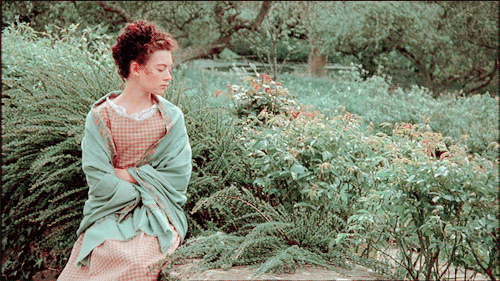
#elizabeth gaskell#Andrew Davies#nicholas renton#wives and daughters#wives and daughters 1999#justine waddell#keeley hawes#francesca annis#bill paterson#anthony howell#tom hollander#Michael Gambon#penelope wilton#barbara flynn#deborah findlay#iain glen#barbara leigh-hunt#rosamund pike#elizabeth spriggs#richard coyle#ian carmichael#shaughan seymour#jemima rooper#tonia chauvet#period drama#period dramas#costume drama
10 notes
·
View notes
Photo
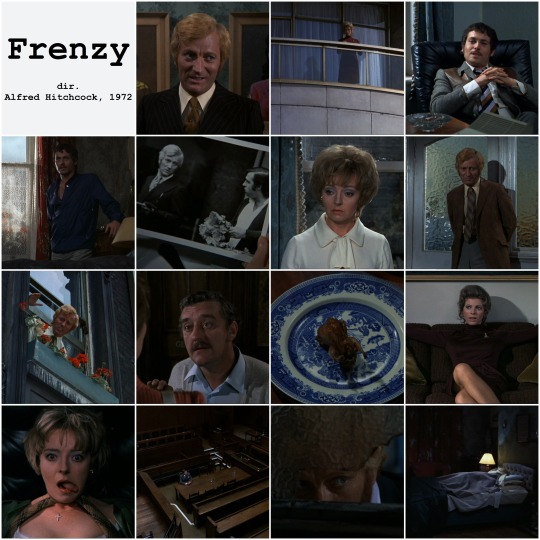
Frenzy
directed by Alfred Hitchcock, 1972
#Frenzy#Alfred Hitchcock#movie mosaics#Barry Foster#Billie Whitelaw#Jon Finch#Barbara Leigh-Hunt#Bernard Cribbins
8 notes
·
View notes
Photo


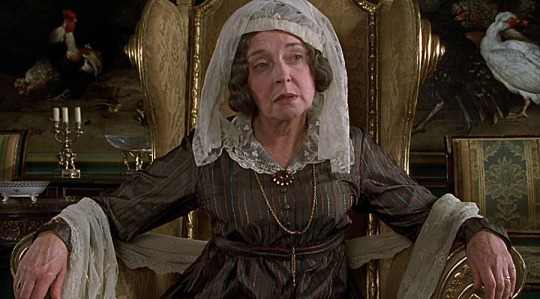
Совместные съёмки актёров из сериала "Гордость и предубеждение"1995.
Колин Ферт и Барбара Ли Хант совместная съёмка в фильме "Разрушенный"( Tumbledown), 1988. События фильма разворачиваются в 1982 году во время Фолклендской войны между Великобританией и Аргентиной. Офицер британской армии Роберт Лоуренс во время сражения в битве при Маунт - Тамблдаун получает серьезное ранение в голову. Роберт выжил, но около 40% его мозга оказалось повреждено.
Колин Ферт- Роберт Лоуренс
Барбара Ли Хант- Джейн Лоуренс, мать Роберта.
1 note
·
View note
Photo

- Let's hope he slips up soon.
- In one way I rather hope he doesn't. We haven't had a good juicy series of sex murders since Christie. And they're so good for the tourist trade. Foreigners somehow expect the squares of London to be fog-wreathed, full of hansom cabs and littered with ripped whores, don't you think?
Frenzy, Alfred Hitchcock (1972)
#Alfred Hitchcock#Anthony Shaffer#Jon Finch#Barry Foster#Barbara Leigh Hunt#Anna Massey#Alec McCowen#Vivien Merchant#Billie Whitelaw#Clive Swift#Bernard Cribbins#Michael Bates#Jean Marsh#Gilbert Taylor#Ron Goodwin#John Jympson#1972
3 notes
·
View notes
Text




Six Plays by Alan Bennett: One Fine Day (1.5, LWT, 1979)
"One o'clock? It says 'while you wait'."
"Well, you can wait. But you don't want to hang around here all morning, do you?"
"Well, what takes so long?"
"He's got arthritis."
"Perhaps you ought to take the sign down."
"Well, we're ready for retiring. We've got to come out of here anyway. All this is coming down. Is it important? The key?"
"No, it's not important. One o'clock."
#six plays by alan bennett#one fine day#alan bennett#single play#stephen frears#lwt#1979#dave allen#robert stephens#dominic guard#barbara leigh hunt#leslie sands#harold innocent#benjamin whitrow#edward de souza#toby salaman#patrick bailey#madeline church#don fellows#bruce boa#sheila kelley#mary maddox#liz crowther#rosamund greenwood#quietly desperate study of one man's very self contained (and almost entirely unobserved) midlife crisis. beautifully played by Allen in#one of his only acting roles‚ a wonderfully understated performance. much larger but just as entertaining is Stephens as his grotesque#boss in the property world (he plays it‚ if this makes sense‚ exactly as Rik Mayall would have played it‚ despite Rik not yet being a known#performer). i wasn't expecting this to be 90 mins (most of the others have been 50 i think) and i do think that the final act‚ in#particular the very ending‚ does something to lessen the melancholy and the ache of the first hour (and to be clear i think that's not the#right decision) but what do i know. notable faces pepper the scenes at Allen's place of work so that they feel almost like celeb cameos
1 note
·
View note
Text







PRIDE AND PREJUDICE (1995)
dir. simon langton
#pride and prejudice 1995#pride and prejudice#jane austen#costume drama#period drama#perioddramaedit#perioddramagif#mr darcy#lizzie bennet#lady catherine de bourgh#colin firth#jennifer ehle#barbara leigh-hunt#my gifs#mine
68 notes
·
View notes
Text
No I don’t think 2005 Pride and Prejudice was as good as the 1995 version, and here’s why.
Let me start off by saying I did actually enjoy the 2005 version, I didn’t think I would, but I did. I think I ended up watching it twice in the same weekend.
The main bit that bothers me is lack of time. Because the movie is relatively short, they are forced to leave out information and characters that are really very important to the story. Not only that, but it means every single line is full of exposition. Plus, they acquired some very talented actors, each of whom only got about two scenes. It felt like they didn’t have enough time to get into character at all.
Take Judi Dench’s Lady Catherine for example. I love Judi Dench to bits, but her Lady Catherine is a blank slate next to Barbara Leigh-Hunt’s Lady Catherine. Hers is dynamic and full of life and you really get a feel for the character, same with Jane, and Caroline Bingley, and Mrs Bennet etc etc etc. compared to their 2005 counterparts.
The thing about Pride and Prejudice as a book is that every line is important, which is what you want. Jane Austen doesn’t add lines willy. There are no 4 chapter descriptions of the French sewer systems. Every line is intentional, and to adapt anything less without substituting the equivalent in film, you’re going to miss a lot of what makes Pride and Prejudice good.
Oh and another thing that bothers me, although somewhat less, is the weird ass casting.
Don’t get me wrong everyone does a good job with what they have but when you cast a period drama, you basically have to choose by whose beauty standards you are going to judge, modern or the standards of the time period in which the film is set. In this case, these would be regency standards.
1995 Pride and prejudice does regency well but 2005 doesn’t pick one?? Idk who Mr Darcy is supposed to be hot for but it’s not me. If you look at the lineup of Bennet sisters, in terms of hotness, it’s really supposed to go Jane, Lizzie, Lydia, Kitty, Mary.
But then in 2005 P&P, by modern standards it arguably goes Lizzie, Mary, Jane, Kitty, Lydia, which makes no sense, and then by Regency standards Lizzie would probably be dead last. They weren’t about those hollow cheekbones. Remember how they were into Ancient Greece and Rome at the time? Fuller figures and rounder faces were in.
It just doesn’t make any sense. Also not that important: THE HAIR. WHAT HAPPENED. I UNDERSTAND NOT DOING THE CURLY BANGS FOR SOME, BUT WHY DOES NOT A SINGLE SISTER HAVE THEM??? the three youngest could definitely pull them off and Jane probably could too. Why one earth wouldn’t you have them. They weren’t just a fad, there were like five people in the whole of England who didn’t have them I don’t care if you don’t like them it doesn’t make any sense that not a single girl would have them what’s with the stringy bangs
ALSO, is Lizzie supposed to be a sex worker in the 2005 version??? No??? Then why does she wonder around with her hair down in polite company? It certainly isn’t because she’s poor, putting one’s hair up is free, and she knows full well she’s going to the house of a gentleman who’s friends who will judge her family based on her appearance. So again, why is her hair down
And for that matter, Bingley goes into Jane’s room, alone, while she’s in her night things. That doesn’t sound like much but he just wouldn’t do that. He is supposed to be the perfect gentleman and this is a scandal. This could literally ruin Jane’s reputation and he does it like it’s perfectly normal. She should have kicked him in the shins and flung him out the door
Apparently I had more feelings about this than I thought. Anyway…
#1995 pride and prejudice#2005 pride and prejudice#Jane Austen#vs#look I understand the hand clench scene but other than that would someone please explain how 2005 mr Darcy was hot
37 notes
·
View notes
Photo

Frenzy, Italian lobby card, 1972
#submission#Frenzy#Alfred Hitchcock#Jon Finch#Barry Foster#Barbara Leigh-Hunt#Lobby Cards#Lobby Card#Fotobusta
1 note
·
View note
Text
LUST FOR A VAMPIRE (1971) – Episode 196 – Decades Of Horror 1970s
“He had a heart attack.” And you get a heart attack! Everybody gets a heart attack! Is that normal? Join your faithful Grue Crew – Doc Rotten, Bill Mulligan, Chad Hunt, and Jeff Mohr – as they count the heart attacks while they continue their reverse trek through Hammer’s Karnstein Trilogy with Lust for a Vampire (1971).
Decades of Horror 1970s
Episode 196 – Lust for a Vampire (1971)
Join the Crew on the Gruesome Magazine YouTube channel!
Subscribe today! And click the alert to get notified of new content!
https://youtube.com/gruesomemagazine
Decades of Horror 1970s is partnering with the WICKED HORROR TV CHANNEL (https://wickedhorrortv.com/) which now includes video episodes of the podcast and is available on Roku, AppleTV, Amazon FireTV, AndroidTV, and its online website across all OTT platforms, as well as mobile, tablet, and desktop.
In 1830, forty years to the day since the last manifestation of their dreaded vampirism, the Karnstein heirs use the blood of an innocent to bring forth the evil that is the beautiful Mircalla, or as she was in 1710, Carmilla.
Director: Jimmy Sangster
Writers: Tudor Gates (screenplay); J. Sheridan Le Fanu (based on characters created by)
Selected Cast:
Barbara Jefford as Countess Herritzen
Ralph Bates as Giles Barton
Suzanna Leigh as Janet Playfair
Yutte Stensgaard as Mircalla / Carmilla Karnstein
Michael Johnson as Richard Lestrange
Helen Christie as Miss Simpson
Mike Raven as Count Karnstein (dubbed by Valentine Dyall)
Christopher Cunningham as Coachman
Harvey Hall as Inspector Heinrich
Michael Brennan as Landlord
Pippa Steel as Susan Pelley
Judy Matheson as Amanda McBride
Caryl Little as Isabel Courtney
David Healy as Raymond Pelley
Jonathan Cecil as Arthur Biggs
Erik Chitty as Professor Herz (as Eric Chitty)
Jack Melford as Bishop
Christopher Neame as Hans
Kirsten Lindholm as Peasant Girl
Luan Peters as Trudi
In the Seventies, Hammer Films struggled to find its way as horror films moved away from gothic horror into modern-day terrors; however, the company famous for Dracula and Frankenstein did earn some success with a trio of films referred to as The Karnstein Trilogy. The Grue Crew settles in to revisit the middle entry, Lust for a Vampire, which follows Vampire Lovers (1970) and leads into Twins of Evil (1971). Unfortunately, the film was plagued with misfortune from the onset: both Peter Cushing and Ingrid Pitt refused to return; the original director, Terence Fisher, suffered injuries when he was hit by a car and was replaced at the last minute by Jimmy Sangster; the director and the writer clashed with producers who insisted on including the pop song “Strange Love.” Even co-star Ralph Bates called the feature, “One of the worst films ever made.” Certainly, there must be some highlights. Certainly…
At the time of this writing, Lust for a Vampire is available to stream from Shudder, AMC+, Tubi, and Flix Fling. The movie is also available on physical media as a Blu-ray from Shout! Factory.
Gruesome Magazine’s Decades of Horror 1970s is part of the Decades of Horror two-week rotation with The Classic Era and the 1980s. In two weeks, the next episode, chosen by Doc, will be Kingdom of the Spiders (1977). William Shatner and 5,000 spiders! What could go wrong?
We want to hear from you – the coolest, grooviest fans: comment on the site or email the Decades of Horror 1970s podcast hosts at [email protected].
Check out this episode!
2 notes
·
View notes
Text
THE 100 MOST POPULAR AMERICAN ACTRESSES OF ALL TIME ! (BASED ON INDIES SUBCONSCIOUS ASSESSMENT OF THE HIGHEST INFLATION-ADJUSTED WORLDWIDE GROSSING AMERICAN FILMS OF ALL TIME !) (1900-2022)
👇
http://www.imdb.com/list/ls520967383/
1. .Elizabeth Taylor
2. .Vivien Leigh
3. .Julie Andrews
4. .Marilyn Monroe
5. .Grace Kelly
6. .Audrey Hepburn
7. .Olivia de Havilland
8. .Norma Shearer
9. .Greer Garson
10. .Lindsay Lohan
11. .Faye Dunaway
12. .Natalie Portman
13. .Diane Keaton
14. .Jessica Lange
15. .Barbra Streisand
16. .Anne Bancroft
17. .Uma Thurman
18. .Ingrid Bergman
19. .Catherine Zeta Jones
20. .Joan Fontaine
21. .Natasha Richardson
22. .Emily Blunt
23. .Doris Day
24. .Winona Ryder
25. .Salma Hayek
26. .Ashley Judd
27. .Laura Linney
28. .Barbara Stanwyck
29. .Julianne Moore
30. .Shirley Temple
31. .Shirley Maclaine
32. .Sandra Bullock
33. .Meg Ryan
34. .Susan Sarandon
35. .Sophia Loren
36. .Gwyneth Paltrow
37. .Lauren Bacall
38. .Emma Thompson
39. .Helen Hunt
40. .Goldie Hawn
41. .Holly Hunter
42. .Sharon Stone
43. .Helen Mirren
44. .Audrey Tautou
45. .Greta Garbo
46. .Lillian Gish
47. .Claudette Colbert
48. .Carole Lombard
49. .Mary Pickford
50. .Gene Tierney
51. .Kristen Stewart
52. .Drew Barrymore
53. .Hilary Swank
54. .Agnes Moorehead
55. .Ava Gardner
56. .Jean Harlow
57. .Catherine Deneuve
58. .Katharine Hepburn
59. .Jean Simmons
60. .Helena Bonham Carter
61. .Susan Hayward
62. .Judy Garland
63. .Emma Roberts
64. .Greta Gerwig
65. .Jane Wyman
66. .Cameron Diaz
67. .Rita Hayworth
68. .Michelle Williams
69. .Julia Roberts
70. .Rachel McAdams
71. .Joan Crawford
72. .Carrie Fisher
73. .Deborah Kerr
74. .Geena Davis
75. .Laura Dern
76. .Maggie Smith
77. .Mary J. Blige
78. .Ginger Rogers
79. .Bette Davis
80. .Annette Bening
81. .Kate Winslet
82. .Cate Blanchett
83. .Ellen Burstyn
84. .Zoe Saldana
85. .Geraldine Page
86. .Marlene Dietrich
87. .Jane Fonda
88. .Joan Cusack
89. .Kathy Bates
90. .Carey Mulligan
91. .Sissy Spacek
92. .Renee Zellweger
93. .Marisa Tomei
94. .Penelope Cruz
95. .Liv Tyler
96. .Angela Lansbury
97. .Vera Farmiga
98. .Jessica Chastain
99. .Jennifer Aniston
100. .Jullianne Hough
2 notes
·
View notes